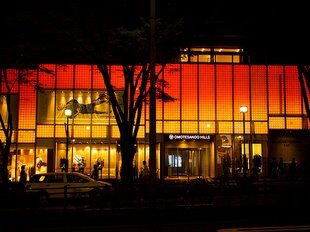Are you going to be driving in Japan? You are sure to have an unforgettable adventure.
To really get a feel for Japan, small cities and large, cars are the way to go. Even if your Japanese is very limited, don’t fear; the Japanese people are friendly and hospitable and will be happy to assist. A traveler’s dictionary can be very helpful as well.
Road Rules for Driving in Japan
Regarding seat belts, the same rules apply in Japan. Everyone must be buckled while traveling. Young children and of course toddlers and babies should be in car seats; these can be rented for a nominal fee.
Driving while under the influence of alcohol is forbidden.
Cars drive on the left side of the road, the driver’s seat is on the right side.
Thankfully, most highway signs are in English as well as Japanese.
Some scenic routes and major highways have tolls, but most roads are free. Roads are well maintained for the most part, although they can be a bit tight, especially on side streets. In busy cities, expect traffic jams especially during rush hours.
Although the majority of drivers respect road regulation, drive cautiously, keeping an eye peeled for cyclists and careless drivers.
Better than Driving in Japan – Japan tours to Book now!
Day Trips from Tokyo:
Kamakura and Tokyo Bay Day Trip from Tokyo
Snow Tour from Tokyo
Nikko National Park Day Trip from Tokyo
Mt Fuji and Aokigahara Forest Day Trip from Tokyo
Mt Fuji, Lake Ashi and Bullet Train Day Trip from Tokyo
Kyoto Rail Tour by Bullet Train from Tokyo
Mt Fuji, Yamanakako Onsen Experience and Outlets Shopping Day Trip From Tokyo
Mt Fuji Day Trip including Lake Ashi Sightseeing Cruise from Tokyo
Japan Rent a Car
If you plan to rent a car in Japan, research all the details before your arrival, unless you are fluent in Japanese.
Try these Car rental Japan companies:
- Budget
- Hertz
- Times Car Rental
- Nippon Rent-A-Car
- Toyota Rent-A-Car
What are the speed limits?
Pay attention to posted signs. In most town, one cannot exceed 30 ts 50 km/h.
Open roads generally have an 80 km/h limit.
International Driving Permits
In order to drive in Japan, you must obtain an International Driving Permit (IDP). This will be valid for up to 12 months. In order to use the IDP for more time, you must return to your home country for at least 90 days, then reapply. You can obtain an IDP if you are at least 18 and have a valid driver’s license. For more information, visit your local AAA.
People who stay in Japan for more than one year must obtain a Japanese driver’s license.
Traffic Signs
Do not expect English traffic signs. Equip yourself with a good English map, and get a GPS, which can be rented with your car. Note – you will probably be able to key in phone numbers as well as addresses.
Gas Stations
The fill ‘er up situation is just the same as in most westernized countries. Some have full service only, others offer self-serve as well. Hours of operation can be round the clock, others have limited hours. And you can pay with yen or your credit card. When using a full service station you may get by with sign language. An attendant will point to the stall you are to use. Simply advance to the stall, turn your key to shut off the car and open the window. Point to the type of gas you desire, and if you are paying with cash, show him how much yen you wish to spend. When using credit card, you can write the amount you wish to spend on a slip of paper. Tip: “mantan” means a full tank. The attendant may provide a towel for you to clean the dashboard or mirror, and will happily direct you out into traffic if you are able to communicate!
Self service stations do not feature English language options. If you have any problems, an attendant will assist you. If you are paying in yen, note that there is often a change machine somewhere in the area.
Parking
Again, as in other countries, parking fees can range from hundreds of yen per hour, to free. Depends whether you are parking in a busy area, or in a small residential place. Tourist areas usually have parking lots that charge between 200 and 500 yen, for however long you are there. City hotels often charge in the area of 1000 yen per night, as opposed to hotels in outlying areas which generally provide parking free of charge.
Summary
Driving in Japan will probably not be suitable for most tourists, due to the language barrier, high cost of tolls, parking and gas, other side of the road driving, narrow streets, and snarly traffic. Due to an excellent public transportation system, driving a car does not really add that much value, except if you will be spending much time in out of the way districts.





